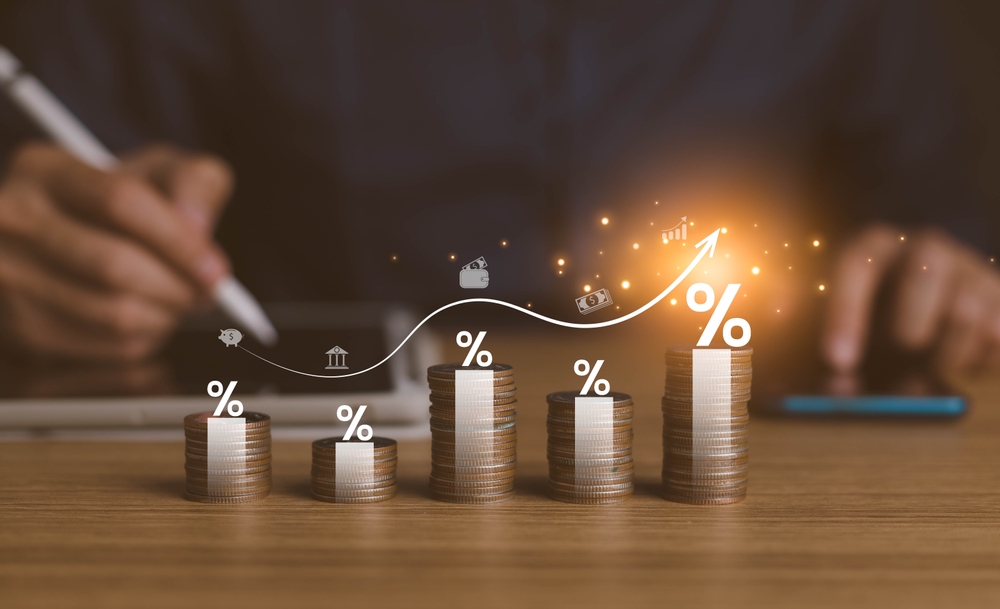Interest rates are vital in the financial world, impacting everything from personal loans to national economic policies. Understanding how interest rates work and their impact on banking and personal finances can help you make informed decisions about saving, borrowing, and investing. This comprehensive guide will delve into the basics of interest rates, how they are determined, and their effects on various aspects of personal finance.
What Are Interest Rates?
Interest rates signify the expense associated with borrowing funds or the earnings generated from savings investments. When you take out a loan, the interest rate is the amount the lender charges you for using their money. Conversely, when you save or invest money in a bank or other financial institution, the interest rate is the return you earn on your deposited funds.
Interest rates are typically expressed as a percentage of the principal amount—the original sum of money borrowed or invested. These rates can be fixed, meaning they remain constant over the life of the loan or investment, or variable, meaning they can change over time based on market conditions.

How Are Interest Rates Determined?
Several factors influence the determination of interest rates, including:
1. Central Bank Policies: Central banks, such as the Federal Reserve in the United States, play a significant role in setting interest rates. They use tools like the federal funds rate to influence the economy. By raising or lowering this rate, central banks can encourage borrowing and spending (lower rates) or promote saving and reduce inflation (higher rates).
2. Inflation: Inflation refers to the increase in the overall prices of goods and services, which reduces the purchasing power of currency. Central banks often adjust interest rates as a tool to control inflationary pressures. Higher interest rates can help curb inflation by reducing spending and borrowing, while lower rates can stimulate the economy by encouraging these activities.
3. Economic Conditions: The overall health of the economy affects interest rates. During periods of economic expansion, interest rates generally increase due to heightened demand for credit. Conversely, in times of economic recession or downturn, interest rates typically decrease to stimulate borrowing and investment.
4. Credit Risk: Lenders assess the risk of borrowers defaulting on their loans. Borrowers with higher risk levels typically face higher interest rates to offset the elevated risk.
5. Market Demand and Supply: The supply of money available for lending and the demand for loans also impact interest rates. When there’s an excess of funds available for lending, interest rates generally decrease. Conversely, when loan demand is high and supply is limited, interest rates rise.
Types of Interest Rates
There are several types of interest rates that affect personal finances and banking, including:
1. Nominal Interest Rate: The nominal interest rate is the stated rate on a loan or investment without adjusting for inflation. It represents the raw percentage that will be applied to the principal amount.
2. Real Interest Rate: The real interest rate adjusts the nominal rate for inflation, providing a more accurate measure of the cost of borrowing or the return on investment. You can determine it by deducting the inflation rate from the nominal interest rate.
3. Annual Percentage Rate (APR): APR is a broader measure of the cost of borrowing, which includes not only the nominal interest rate but also any additional fees or costs associated with the loan. APR offers a broader view of the overall expenses associated with a loan.
4. Effective Interest Rate: The effective interest rate takes into consideration compounding, where interest is computed on both the original principal and the accumulated interest from prior periods. This rate provides a true reflection of the cost of borrowing or the return on investment over time.
How Interest Rates Affect Personal Finances
Interest rates significantly influence different facets of personal finance, such as:
1. Savings Accounts: Higher interest rates on savings accounts and certificates of deposit (CDs) mean better returns on your deposits. When interest rates rise, savers earn more on their money, encouraging more savings.
2. Loans and Mortgages: For borrowers, higher interest rates mean higher monthly payments on loans and mortgages. This can affect the affordability of large purchases, such as homes and cars. On the flip side, decreased interest rates lower the costs associated with borrowing, thereby reducing the expense of financing such purchases..
3. Credit Cards: Interest rates on credit cards can vary widely. High interest rates can lead to significant costs if you carry a balance from month to month. It’s crucial to pay attention to the APR on your credit cards and aim to pay off balances in full to avoid high interest charges.
4. Investments: Interest rates also impact investment returns. When interest rates increase, bonds, especially those with lower rates, lose attractiveness, resulting in a decline in their prices. On the flip side, when interest rates decrease, bonds with higher existing rates gain in value.
5. Economic Behavior: Changes in interest rates influence consumer behavior. Lower rates tend to encourage borrowing and spending, boosting economic activity. Higher rates, on the other hand, promote saving and can slow down consumer spending.
Strategies for Managing Interest Rate Changes

Given the impact of interest rates on personal finances, it’s essential to develop strategies to manage these changes effectively:
1. Diversify Investments: Diversification can help mitigate the risk associated with interest rate fluctuations. Diversifying your investments across various asset classes helps lessen the impact of rate changes on your overall portfolio.
2. Monitor Rate Trends: Stay informed about interest rate trends and economic conditions. Understanding the broader economic environment can help you make timely decisions about borrowing, saving, and investing.
3. Refinance Loans: If interest rates drop significantly, consider refinancing existing loans to take advantage of lower rates. This can lead to lower monthly payments and result in savings throughout the loan term.
4. Pay Down Debt: In a rising interest rate environment, focus on paying down high-interest debt, such as credit card balances. Reducing debt can help you avoid higher costs associated with rising rates.
5. Adjust Savings Strategies: Take advantage of higher interest rates by increasing contributions to high-yield savings accounts or CDs. Conversely, when rates are low, explore other investment opportunities that offer better returns.
Conclusion
Understanding interest rates and their impact on banking and personal finances is crucial for making informed financial decisions. Whether you’re saving for the future, borrowing for a major purchase, or investing in the market, interest rates play a key role in determining the cost and return on your financial activities. By staying informed and implementing effective strategies, you can navigate the complexities of interest rates and optimize your personal finances for long-term success.
